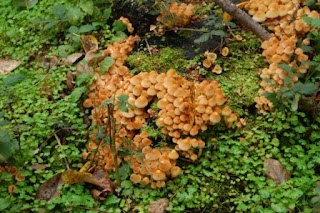
Hey guys,
Hopefully someone will check this blog before class ends tonight. My daughter is sick again so I won't be able to make my project presentation. However, I did want to share what I did.
I think it was one of the first two classes that Bob mentioned the imperfections of trying to classify mushrooms. The Friesian field-based approach is primarily what mushroom identifiers use today but this system of identifying mushrooms can even break down due to the natural evolution of the world. In the last twenty-five years, with the rapid growth of technology, came the advancement of the microscopic approach, DNA sequencing. This new information resulted in a big rearrangement of the basidiomycete fungi. I've posted a website about this topic of DNA sequencing vs. the Friesian method which some of you may have already seen, but I just think it's fascinating. I think it says more about the human psyche than about our classification system that we have this need to fit everything into nice labeled boxes, including our own species.
MykoWeb--Evolution and Morphology
For my project I painted a 30x40 canvas of Haeckel's basidiomycete fungi which my daughter promptly threw up on yesterday so that today I had to put together this collage. I broke up picture into segments, because like I said before, I like that things don't fit into a nice neat box.
Enjoy!



















































